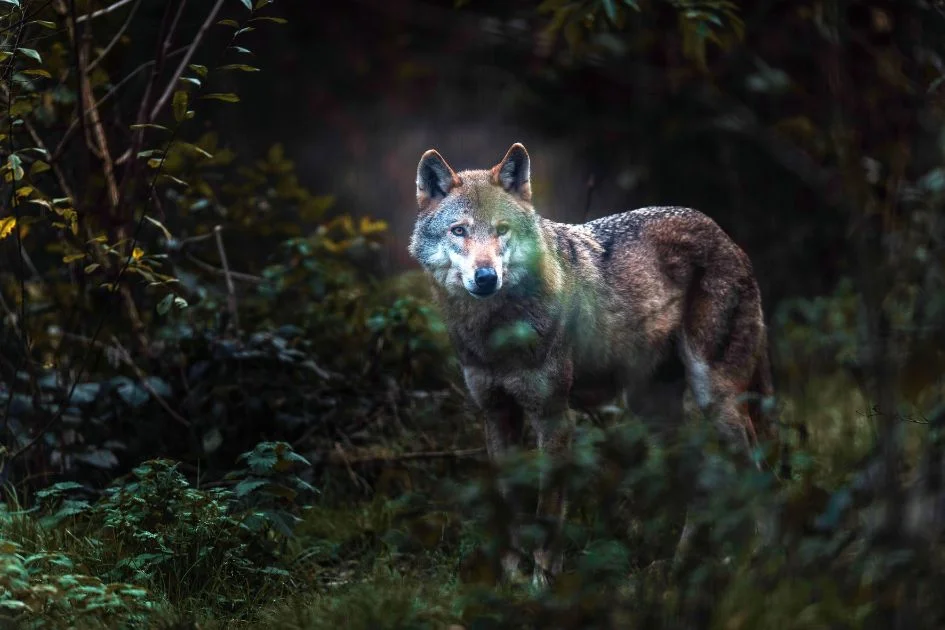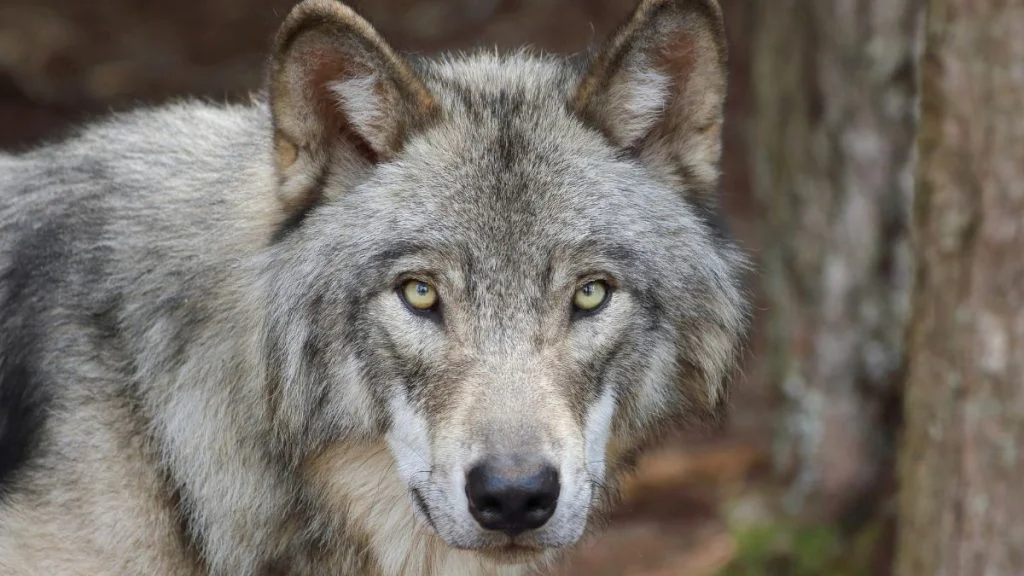Wolves are striking animals, strong hunters, and very popular canines.
To hunt and navigate their environments, they have to rely on their senses, which include sight.
This brings up a couple of questions about how well their eyesight is, particularly when they need to see colors. Can wolves see colors? If not, are wolves color blind?
Wolves do see colors, and in that sense, they can’t be termed color blind. However, they do not see as many colors as humans do.
This has its advantages as they can see better in dim light, but it also means they don’t prioritize eyesight as humans do.
In the following paragraphs, we’ll look at the wolf’s eyes, what colors wolves can see, and other related information.
Are Wolves Colorblind?

Wolves are not considered colorblind because they can still view colors. However, there’s a big difference between their color range and that of humans.
This is due to the lack of cone receptors cells in the eyes that are responsible for processing light.
The lack of cone receptor cells makes wolves dichromatic, as opposed to trichromatic humans.
Wolves and other dichromatic animals have two cone receptor cells while humans have three basic cone receptor cells. Dichromacy is a problem in humans, but normal for animals like wolves.
Can Wolves See Colors?
Wolves can see colors, but because they are dichromatic they can’t see all colors.
So, what colors can wolves see?

A wolf’s eyes can only distinguish between yellow and blue, and can also strongly see grey and black.
They are unable to see red, orange, and green colors, which makes their view of a particular surrounding different from that of a human.
In the place of the extra cone receptor cell, wolves have more rod photoreceptors than humans.
These photoreceptors enable them to see better under low light than humans do.
Do Wolves have Good Eyesight?

Wolves have good eyesight, but as we’ve seen, it is lacking compared to humans and trichromatic animals.
The wolf’s sight is befitting a hunter as it faces forward at 180°, which helps them focus on prey.
As a predator, wolves are prey to no animal (except humans). Thus, they don’t need to keep an eye out for danger.
This is unlike herbivorous animals like rabbits and deer that have their eyes placed at the sides rather than forward. This helps them detect predators with ease.
Though wolves don’t see colors as well as humans, they still have aspects that make their eyes superior to that of a human.
Drawing from what we explained above on photoreceptors, wolves see better in a dim-lit place.
Overall, they don’t rely on their sight as much as they use other senses, especially the sense of smell. Their sense of smell is stronger than that of a human.
Can Wolves See in the Dark?

Wolves can see strongly in the dark due to the tapetum lucidum, present only in some animals.
The tapetum lucidum reflects light to the retina, giving any animal that possesses it a good night vision.
Wolves are nocturnal animals and need to see well at night. Having a good night vision is vital to their survival. The tapetum lucidum is also what makes the wolf’s eye glow at night.
Compared to wolves, humans have poor night visions. It’s a good thing we have the intelligence to invent torchlights and lamps!
Other animals with good night vision include snakes, some spider species, cows, deer, and owls.
How Far Can Wolves See?
Wolves have very long sight, even at night. This helps them see prey from a distance, going up to 1 mile.
However, they don’t see details when the object is at a long distance, often more than 75 feet. Not that they need the details.
Once they can pick out the shape of the prey, they have all the visual information they need.
Let’s not forget that they also have other stronger senses that contribute to making them good hunters.
According to research, a wolf’s sense of smell is 100 times better than that of a human.
They use scent as a form of communication too. Wolves urinate to mark their territories and the scent can be picked up by other wolves.
Other Animals that are Colorblind
Wolves aren’t the only partially colorblind animals existing today.
There are many others with a limited color range that have adapted to seeing that way, alongside using other strengths. These animals include:
- Lions
- Cats
- Dogs
- Owls
- Snakes, lizards, and many other reptiles
FAQs
Can wolves see pink?
Because they can’t see red and orange, they would also be unable to see pink. It is not a big defect, however, as there isn’t much pink in their habitat.
How do wolves see in the dark?
Wolves can see in the dark due to how their eyes are built. The rod photoreceptors and tapetum lucidum help them see better at night. This is a strength because of their nocturnal nature.
Summary
Wolves have their strengths and weaknesses, much like other animals and humans.
While wolves are not colorblind, there are some colors they can’t see.
These colors include red, orange, and green. Consequently, their view of the environment is different from that of a human.
Their strengths cover up for their weaknesses, and it helps them survive, as well as to adapt to the environment.
Wolves may not have the advantage of seeing many colors, but they make up for that with their long sight, strong night vision, and a keen sense of smell.
You May Also Like:
- Wolf Eye Colors: What Color Are Wolves Eyes?
- Do Wolves Hibernate Or Migrate In Winter?
- Are Wolves Friendly To Humans? Do Wolves Make Good Pets?
Featured Image Credit: Karlumbriaco / Getty Images






